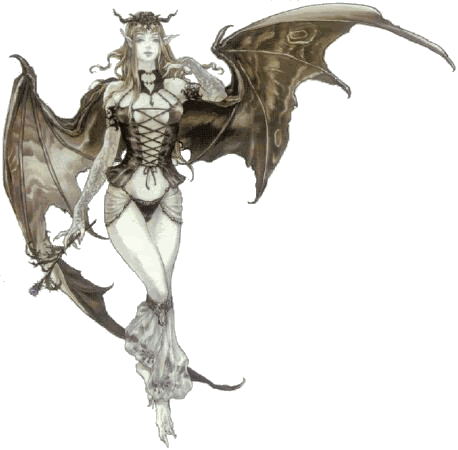The Double Goddess:
Artemis & Athena Lovers
Artemis&Athena
We'll probably never know if any of the Double Goddess images from ancient civilizations were meant by their creators to represent physical love between women. Or, more accurately, we may not ever be able to prove that such a likely contention is true. Certainly some Double Goddesses are portrayed in such intimate ways that contemporary scholars discussing them have become tongue tied or shy about what they are seeing. Australian scholar Chris Sitka- who gives workshops on "Lesbians in Pre-History" asserts that lesbianism must have been common, acceptable, and perhaps the most revered : sacred path to veneration of the female deity.
Lesbians who have shied away from the Goddess movement because of its largely unconscious, but profoundly heterosexist bias, can relax into the knowledge that a lineage exists, going back to the beginnings of human civilization, sanctioning female to female relationship as the original, matriarchal bond and a model of community leadership. This model has mostly been ignored by mainstream culture, even though it is a truism at this point in history that lesbians were and are the vanguard of the women's movement. Significantly for our discussion, much of this impact was made through the influence and productivity of lesbians couples, in a contemporary version of our ancient Amazon Queens.
This model can be seen in the tantric counterparts, Artemis and Athena. Athena, credited with inventing all of civilization's arts, became Goddess of the city-state, crafts, and culture, and Artemis remained Goddess of wild nature. Both remained "virgin" - neither was willing to relate romantically with men - and both were connected with Amazons. Rarely does a scholar mention the all too obvious likelihood the either or both of these Goddess types might have found their sexual fulfillment with other women. Artemis, the shaman- priestess, might naturally discover her romantic partner in Athena, the physical warrior and head of state. Instead, both are treated not as if their Virgin Goddess status referred to the intactness of a woman belonging to herself, but rather as a kind of insular chastity that repudiated sexuality altogether, and Athena is seen as just one of the boys, bonded with her father, Zeus, out of whose head she supposedly emerged ( fully armed).
Artemis & Athena Lovers
Artemis&Athena
We'll probably never know if any of the Double Goddess images from ancient civilizations were meant by their creators to represent physical love between women. Or, more accurately, we may not ever be able to prove that such a likely contention is true. Certainly some Double Goddesses are portrayed in such intimate ways that contemporary scholars discussing them have become tongue tied or shy about what they are seeing. Australian scholar Chris Sitka- who gives workshops on "Lesbians in Pre-History" asserts that lesbianism must have been common, acceptable, and perhaps the most revered : sacred path to veneration of the female deity.
Lesbians who have shied away from the Goddess movement because of its largely unconscious, but profoundly heterosexist bias, can relax into the knowledge that a lineage exists, going back to the beginnings of human civilization, sanctioning female to female relationship as the original, matriarchal bond and a model of community leadership. This model has mostly been ignored by mainstream culture, even though it is a truism at this point in history that lesbians were and are the vanguard of the women's movement. Significantly for our discussion, much of this impact was made through the influence and productivity of lesbians couples, in a contemporary version of our ancient Amazon Queens.
This model can be seen in the tantric counterparts, Artemis and Athena. Athena, credited with inventing all of civilization's arts, became Goddess of the city-state, crafts, and culture, and Artemis remained Goddess of wild nature. Both remained "virgin" - neither was willing to relate romantically with men - and both were connected with Amazons. Rarely does a scholar mention the all too obvious likelihood the either or both of these Goddess types might have found their sexual fulfillment with other women. Artemis, the shaman- priestess, might naturally discover her romantic partner in Athena, the physical warrior and head of state. Instead, both are treated not as if their Virgin Goddess status referred to the intactness of a woman belonging to herself, but rather as a kind of insular chastity that repudiated sexuality altogether, and Athena is seen as just one of the boys, bonded with her father, Zeus, out of whose head she supposedly emerged ( fully armed).


